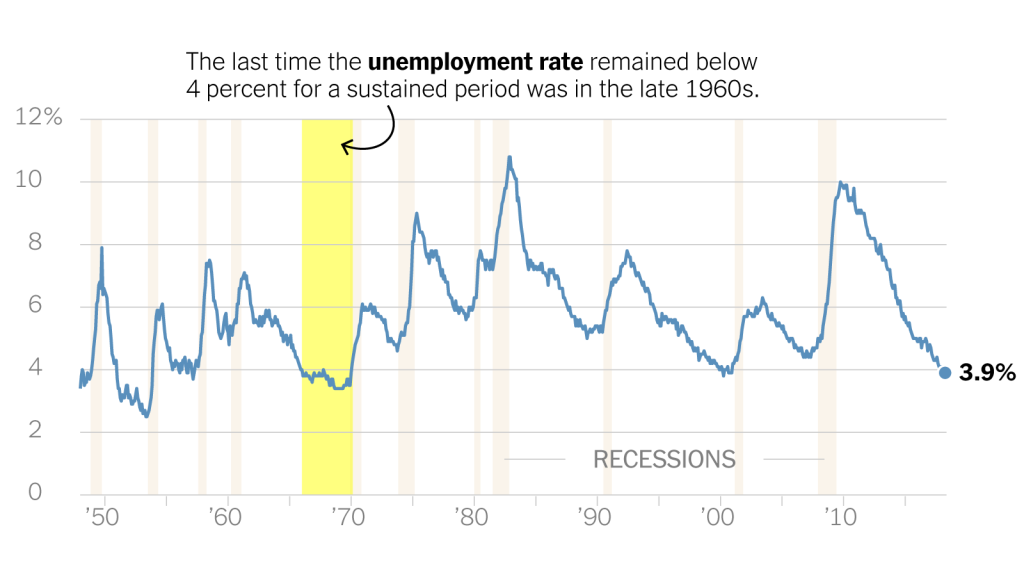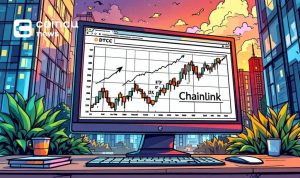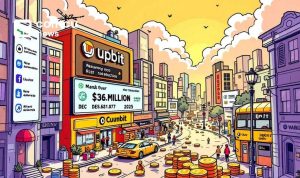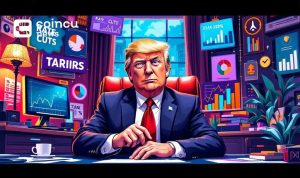Key Points:
- Nonfarm employment in the US increased by 175,000 in April, falling short of the anticipated 243,000 jobs. Despite this, the rise indicates ongoing recovery from the pandemic’s impact on the labor market.
- The unemployment rate rose to 3.9%, slightly higher than the expected 3.8%. This suggests a nuanced economic landscape, with factors like labor force participation rates influencing the job market’s dynamics.
- While the slower job growth signals continued momentum in economic recovery, it also underscores the need for policymakers to address both short-term employment challenges and long-term structural issues.
In April, the United States saw a notable uptick in seasonally adjusted nonfarm employment, marking an increase of 175,000 jobs.

This growth, however, was accompanied by a rise in the nonfarm employment rate, reaching 3.9%. The latest figures, released by the U.S. Bureau of Labor Statistics, have stirred both optimism and concern among economists and policymakers.
Initially, economists had forecasted a more robust surge in job creation, predicting an addition of 243,000 nonfarm jobs. Additionally, the anticipation was for the unemployment rate to hold steady at 3.8%. The actual numbers falling short of these expectations indicate a more nuanced economic landscape.
Nonfarm Employment Rises by 175,000, Below Expectations

Despite the shortfall in job gains compared to projections, the increase of 175,000 positions signifies ongoing momentum in the labor market’s recovery from the tumultuous effects of the COVID-19 pandemic. It suggests that businesses are continuing to hire, albeit at a slightly slower pace than anticipated.
However, the simultaneous rise in the nonfarm employment rate to 3.9% warrants attention. While the uptick may partly reflect more individuals re-entering the workforce in search of opportunities, it also hints at lingering challenges in fully restoring pre-pandemic employment levels. Factors such as labor force participation rates and structural shifts in industries could be contributing to this dynamic.
Readmore: US Election Overview: Swing States, Coalitions, And 2024 Prospects
Reaches 3.9%, Slightly Higher Than Projected 3.8%
The discrepancy between expected and actual job growth underscores the uncertainty surrounding economic projections amid evolving global and domestic conditions. Variables like supply chain disruptions, inflationary pressures, and shifts in consumer behavior continue to influence economic outcomes, making precise forecasts challenging.
Against this backdrop, policymakers may need to recalibrate their strategies to address both short-term concerns, such as employment recovery, and longer-term structural issues impacting the labor market. Measures to support workforce development, enhance job training programs, and stimulate business investment could play pivotal roles in sustaining economic resilience and fostering inclusive growth.
As the U.S. navigates the complexities of post-pandemic recovery, the latest employment data serve as a reminder of the intricate interplay between economic indicators and the broader societal and policy contexts shaping the nation’s trajectory.
| DISCLAIMER: The information on this website is provided as general market commentary and does not constitute investment advice. We encourage you to do your own research before investing. |






















